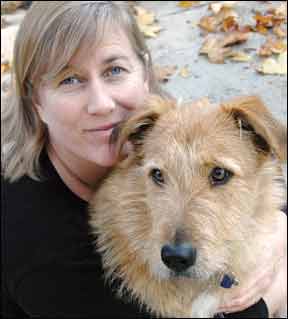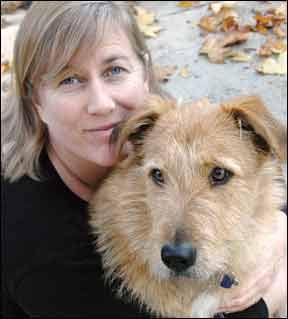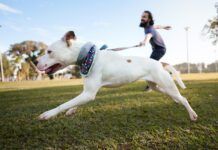Today’s viral video was of a news anchor who was bitten in the face by a dog on live television. If you own a dog, you probably either saw the video, read an article about the incident, or heard other dog owners discussing it. But dogs bite people every day; why was this incident so riveting?

288
Well, for one thing, the dog was on TV because he had been rescued from near death (in an ice-covered pond) only the day prior. There was gripping video footage of the rescue – a handsome young firefighter went into the icy water and hauled the 85-pound dog to safety. The firefighter and the dog’s owner were available and willing to be interviewed about the rescue on the local news show the next morning. That’s all very compelling.
The dog himself was telegenic – a powerful “Argentine Mastiff” with an expressive face. The attractive news anchor was clearly moved by the story of the dog’s rescue, and it appeared that she really loves dogs; she moved from her chair to a spot on the floor right next to the dog, and she repeatedly caressed the dog as she spoke. As she told the story of the dog’s rescue, the camera repeatedly zoomed in on the dog’s large face. He kept panting with his mouth wide open and licking his lips; he seemed to be smiling!
The last thing I wrote: it’s wrong. The dog wasn’t smiling at all. But the news anchor must have thought it looked like a smile, and I’ll bet lots of other people watching the news that morning did, too – that is, just before the lady leaned toward the dog to kiss him, and the dog bit her in the face with one quick snap. The footage was simply shocking.
There is a difference between shock and surprise, though. Educated dog trainers and owners watching the clip weren’t surprised at the bite; they could identify a number of behaviors displayed by the dog that clearly expressed his discomfort. He kept shifting his weight around, and trying to move away from both his owner and the anchor. He panted. He licked his lips. His ears were flattened and back. His lips were pulled back (but not in a smile). He turned his head sharply away and back toward the anchor several times. He also froze a couple of times, for a fraction of a second.
To students of canine body language, these behaviors were the equivalent of the dog saying loudly, “I am kind of freaking out about all this and need some space!” But neither the anchor nor the dog’s owner interpreted the dog’s body language correctly. They didn’t hear so much as a whisper of what the dog was trying to tell them. So he “said” it louder; he snapped. (And the anchor was rushed off to a local hospital for plastic surgery.)
We love our dogs so much that sometimes it’s hard to remember that they are another species! They don’t think like we do, they don’t perceive our shared experiences in the same way that we do, and they can’t communicate the way we do; they can only speak their own language and hope we catch on. We’ve brought them into our homes; the least we can do is try to learn a little of their language (and respect what they say).
Some good resources for canine body-language study: Sarah Kalnajs’ DVD set, “The Language of Dogs,” and Brenda Aloff’s Canine Body Language: A Photographic Guide. Both are available from Dogwise.com; (800) 776-2665. We’ve had a number of articles in WDJ on canine body language; the most recent was in the August 2011 issue. It contained lots of information about what a stressed dog looks like. We’ll take this incident as our cue to bring you more articles on the topic, soon.






